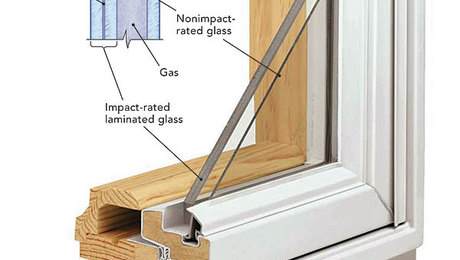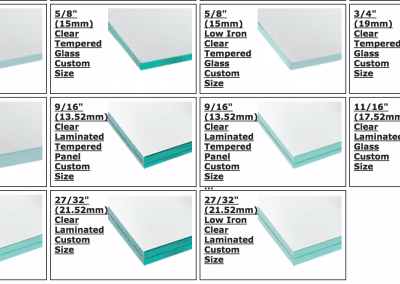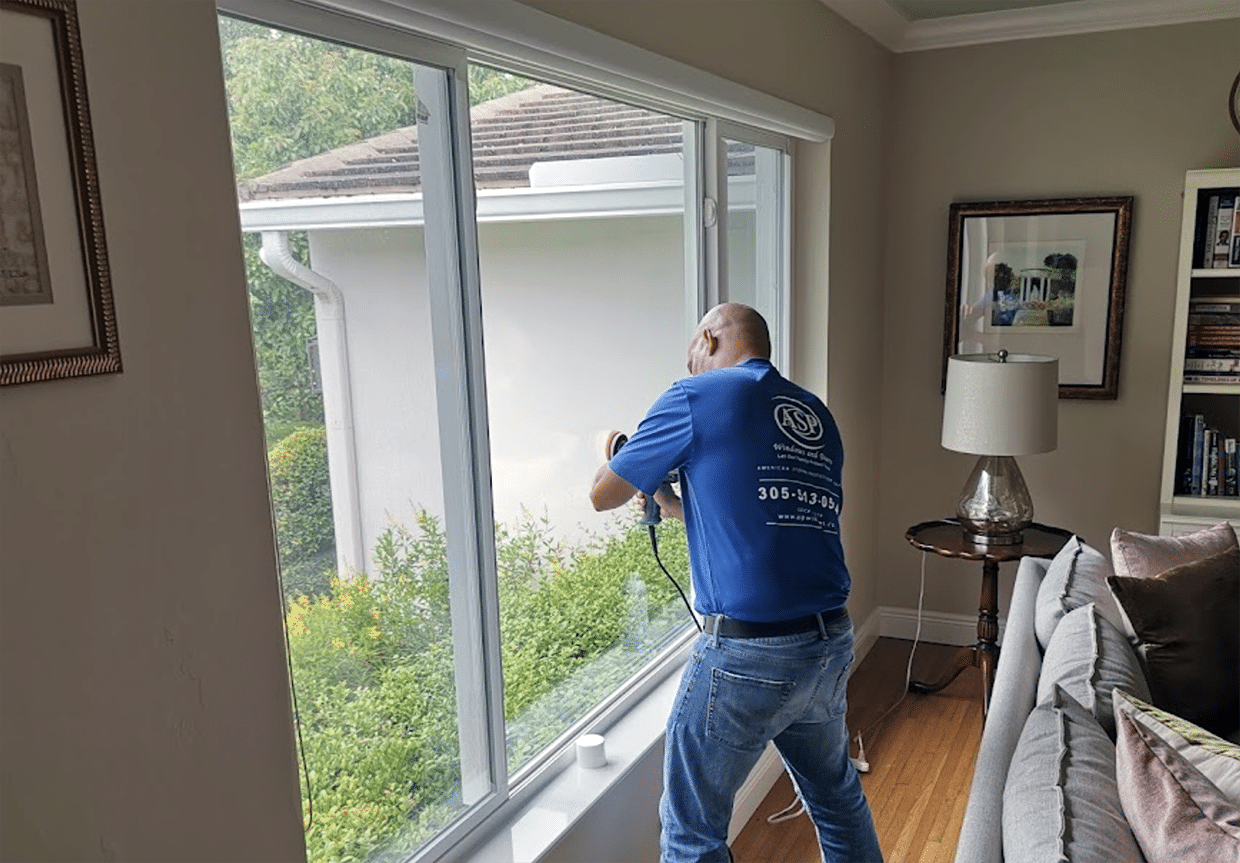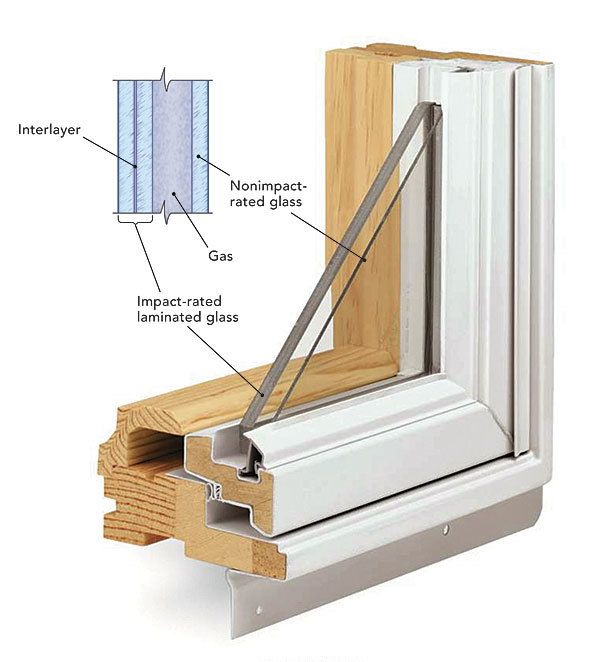In this article, we are going to discuss the topic of impact windows and determine the best thickness for them. Impact windows play a crucial role in protecting homes and buildings from extreme weather conditions and break-ins. Throughout the article, we will explore different factors that contribute to the choice of thickness, including location, building codes, and specific needs. By the end, you will have a better understanding of the ideal thickness for impact windows and how it can ensure the safety and security of your property.
This image is property of d4c5gb8slvq7w.cloudfront.net.
Understanding Impact Windows
Impact windows, also known as hurricane windows or storm windows, are specially designed windows that are built to withstand high winds and flying debris. These types of windows are commonly used in regions prone to hurricanes, tornadoes, and severe storms. They are made with laminated glass, which consists of two layers of glass with a sturdy interlayer of polyvinyl butyrate (PVB) in between. This construction gives impact windows their strength and durability.
Why are Impact Windows Important?
The primary purpose of impact windows is to protect homes and buildings against the damaging effects of high-velocity winds and flying debris during storms. Traditional windows are usually made of a single layer of glass, which can shatter easily upon impact, leaving the interior of the building vulnerable to wind and water damage. Impact windows, on the other hand, are designed to remain intact even when hit by strong winds or debris.
In addition to providing protection against severe weather conditions, impact windows also offer several other benefits. They can enhance the security of a property, as their sturdy construction makes it difficult for intruders to break in. Impact windows also provide energy efficiency by reducing heat transfer and blocking harmful UV rays. This can lead to lower energy bills and increased comfort inside the building. Lastly, impact windows can reduce outside noise, creating a quieter and more peaceful indoor environment.
How Do Impact Windows Work?
The key to the effectiveness of impact windows lies in their construction and design. The laminated glass used in impact windows consists of two layers of glass bonded together with a PVB interlayer. This interlayer is what gives the glass its strength and serves as a barrier against impact. When an impact occurs, such as a strong wind or flying debris hitting the window, the PVB interlayer absorbs and disperses the energy, preventing the glass from breaking.
The PVB interlayer also keeps the glass intact even if it does break, preventing shards of glass from scattering and causing injury. This is a significant safety feature, as it reduces the risk of cuts and other injuries during a storm. Additionally, the interlayer has sound-dampening properties, which contributes to the noise reduction benefits of impact windows.
Factors to Consider in Choosing Impact Windows
When choosing impact windows, several factors need to be considered to ensure the best possible performance and protection. These factors include the climate and weather conditions of the area, local building codes and regulations, and the level of impact resistance required.
Climate and Weather Conditions
The climate and weather conditions of the area play a crucial role in determining the thickness of impact windows needed. Regions prone to hurricanes and strong storms require windows with higher impact resistance. Wind pressure increases with the height of the building, so taller structures may need thicker windows to withstand the increased forces.
Building Codes and Regulations
It is essential to check local building codes and regulations regarding impact windows. These codes specify the minimum requirements for impact resistance in windows based on the area’s risk of hurricanes and severe storms. Compliance with these codes ensures that the windows meet the necessary safety standards and provides the homeowner with peace of mind.
Level of Impact Resistance Required
The level of impact resistance required depends on various factors, such as the proximity of the property to the coast and the historical frequency of severe storms in the area. Higher impact resistance levels are recommended for regions prone to frequent hurricanes and strong winds. Consulting with professionals, such as architects, engineers, or window manufacturers, can help determine the appropriate level of impact resistance needed for a specific location.

This image is property of images.finehomebuilding.com.
Understanding Window Thickness in Impact Windows
The thickness of impact windows is an essential factor in determining their level of impact resistance. The thickness of the glass and the interlayer plays a significant role in how effectively the window can withstand high winds and flying debris.
Importance of Window Thickness in Impact Resistance
The thickness of the glass in impact windows directly affects their ability to resist impact. Thicker glass is stronger and more capable of withstanding the forces exerted by strong winds and debris. Thicker glass also has a higher chance of remaining intact after impact.
The interlayer, typically made of PVB, also contributes to the impact resistance of the window. A thicker interlayer provides additional strength and helps absorb and disperse the energy created by an impact. The thickness of the interlayer can vary depending on the desired level of impact resistance.
Role of Laminated Glass in Impact Windows
Laminated glass is one of the main components of impact windows and plays a vital role in their performance. It consists of two or more layers of glass bonded together with an interlayer in between. The interlayer is usually made of PVB, although other materials like ethylene-vinyl acetate (EVA) may also be used.
Laminated glass offers significant advantages over traditional glass in terms of impact resistance. Even if the glass breaks, the interlayer holds the fragments together, preventing them from falling apart and causing injury. This property is known as the “spider web effect” since the broken glass remains connected, resembling a spider’s web. Laminated glass also provides sound insulation and blocks harmful UV rays, contributing to energy efficiency.
Effect of Window Thickness on Energy Efficiency
Window thickness can also impact the energy efficiency of a building. Thicker windows with a larger air space between the glass layers offer better insulation and reduce heat transfer. This means that less heat or cold from outside is able to pass through the window, resulting in energy savings and increased comfort indoors. Thicker windows also provide better sound insulation, reducing noise pollution from outside sources.
Determining the Best Thickness for Impact Windows
To determine the best thickness for impact windows, several factors should be taken into account. These factors include the location and weather patterns of the area, consulting with professionals, and considering other variables like window frame strength.
Calculating the Ideal Thickness Based on Location and Weather Patterns
The ideal thickness of impact windows can vary based on the specific location and weather patterns of the area. Regions with a higher frequency of hurricanes and severe storms may require thicker windows to withstand the increased wind forces. Consulting with local professionals or window manufacturers can provide valuable insights into the appropriate thickness for a particular location.
Consulting with Professionals for Expert Advice
Seeking advice from professionals who specialize in impact windows can help determine the best thickness based on individual needs and circumstances. These professionals, such as architects, engineers, or window manufacturers, have in-depth knowledge and experience in designing and installing impact windows. They can assess the specific requirements of a property and provide expert advice on the most suitable thickness for the windows.
Considering Other Variables like Window Frame Strength
While window thickness is important, the overall strength of the window system should be considered as well. The frame plays a significant role in the window’s performance during a storm. A sturdy frame, made of materials like aluminum, vinyl, or fiberglass, can help support the weight and impact of thicker glass. It is essential to ensure that the frame is properly installed and securely attached to the building structure to maximize the window’s performance.

This image is property of cgiwindows.com.
Benefits of Optimal Impact Window Thickness
Choosing the optimal thickness for impact windows provides several benefits for homeowners. Let’s explore the key advantages of having impact windows with the right thickness.
Increased Protection against Hurricanes and Severe Storms
Impact windows with the right thickness offer excellent protection against hurricanes and severe storms. Thicker windows can withstand higher wind pressures and are less likely to break or shatter. This helps prevent water and wind from entering the building, reducing the risk of structural damage and water intrusion. Properly installed and sealed impact windows can help safeguard a property and its occupants during extreme weather events.
Improved Energy Efficiency and Noise Reduction
Optimal thickness in impact windows improves energy efficiency by reducing heat transfer. Thicker windows provide better insulation and help maintain a comfortable indoor temperature by preventing the exchange of hot or cold air from outside. This results in lower energy consumption for heating or cooling the building and reduces utility bills.
Thicker impact windows also offer enhanced sound insulation, reducing unwanted outside noise. This can be particularly beneficial for properties located near busy roads, airports, or urban areas. The sound-dampening properties of impact windows create a more peaceful and quiet indoor environment, enhancing the overall comfort of the living or working space.
Enhanced Security against Break-ins
Impact windows with the right thickness can provide an added layer of security to a property. Thicker glass and sturdy frames make it difficult for intruders to break into a building, deterring potential burglaries or break-ins. The laminated glass used in impact windows not only withstands high winds but also acts as a barrier against forced entry. The interlayer holds the glass together, making it harder for an intruder to gain access.
Cost Considerations and ROI
The cost of impact windows can vary based on various factors, including the thickness of the glass. Thicker glass typically costs more due to the additional materials and manufacturing processes involved. However, the long-term benefits and return on investment (ROI) of impact windows should also be considered.
Impact Window Cost Variations Based on Thickness
The cost of impact windows increases as the thickness of the glass and the interlayer increases. Thicker windows require more materials, such as glass and PVB interlayers, and often involve more complex manufacturing processes. Therefore, homeowners should expect to pay a higher price for impact windows with greater thickness.
Long-term Savings and Return on Investment
While impact windows may have a higher upfront cost compared to traditional windows, they offer long-term savings and a positive return on investment. The energy efficiency of impact windows can result in lower energy bills, providing ongoing savings year after year. Additionally, some insurance companies offer discounts on premiums for properties with impact windows, further contributing to the cost savings.
Considering Other Factors like Insurance Premium Reductions
Installing impact windows may also lead to reductions in insurance premiums. Impact windows provide an added layer of protection against storms and hurricanes, reducing the risk of property damage. Insurance companies recognize this and often offer discounts or lower premiums for properties with impact-resistant features like impact windows. Homeowners should check with their insurance provider to determine the potential cost savings associated with impact window installation.

This image is property of brennancorp.com.
Maintenance and Care for Impact Windows
Proper maintenance and care are essential to ensure the optimal performance and longevity of impact windows. Regular cleaning and inspection routines, along with prompt repairs, can help preserve the integrity of the windows.
Regular Cleaning and Inspection Routines
Regular cleaning of impact windows is necessary to remove dirt, dust, and debris that can accumulate on the surface. A mild detergent and water solution can be used to clean the glass and frames. It is important to avoid using abrasive cleaners or materials that can scratch or damage the glass.
Periodic inspections should be conducted to check for any signs of damage or wear. This includes examining the glass for cracks, chips, or breaks, as well as checking the frames for any signs of corrosion or deterioration. Any issues should be addressed promptly to prevent further damage and ensure the continued effectiveness of the impact windows.
Repair Options for Damaged Windows
In the event of damage to impact windows, it is important to seek professional repair services. Certified technicians specializing in impact windows can assess the extent of the damage and determine the best course of action. Depending on the severity of the damage, repairs may involve sealing cracks or replacing damaged glass or frames. Prompt repairs help maintain the impact resistance of the windows and prevent further deterioration.
Maintaining Proper Sealing and Weatherproofing
Proper sealing and weatherproofing are crucial for the performance of impact windows. The seals and weatherstripping around the windows should be regularly checked for wear and tear. Damaged seals should be replaced to maintain the integrity of the window system and prevent air or water infiltration.
It is also important to ensure that the windows are properly closed and locked when not in use. This creates a tight seal and prevents drafts, moisture, and noise from entering the building. Periodically lubricating the hardware, such as hinges and locks, can help maintain their functionality and extend their lifespan.
Installation Process for Impact Windows
The installation of impact windows is a critical process that requires professional expertise. Choosing a reputable contractor and following proper installation techniques are essential for ensuring the windows’ performance and impact resistance.
Choosing a Reputable Contractor for Installation
Selecting a reputable and experienced contractor is crucial when it comes to the installation of impact windows. A qualified contractor will have the necessary knowledge, skills, and equipment to properly install the windows according to industry standards and building codes. Homeowners should research and obtain multiple quotes from different contractors before making a decision.
Preparing the Existing Window Openings
Before installing the impact windows, the existing window openings need to be properly prepared. This involves removing the old windows and ensuring that the openings are clean, structurally sound, and free of any debris. The openings should be carefully measured to ensure a proper fit for the new impact windows.
Proper Installation Techniques and Quality Control
During the installation process, proper techniques and quality control measures should be followed to ensure the windows are installed correctly. This includes securely fastening the windows to the building structure and properly sealing all edges and joints to prevent any water or air leaks.
The final step of the installation process involves testing the windows to ensure they meet the necessary performance standards. This may include conducting water tests to check for any leaks, inspecting the hardware for proper operation, and assessing the overall functionality of the windows.

This image is property of www.luxuryglassny.com.
Other Factors to Consider in Window Selection
While thickness is an important consideration in impact windows, there are other factors that homeowners should also take into account when selecting windows for their property.
Aesthetics and Design Options
The aesthetic appeal of impact windows should not be overlooked. These windows come in various styles, designs, and finishes, allowing homeowners to choose a style that complements the overall architecture and design of their property. Impact windows can enhance the visual appeal of a building, both from the interior and the exterior.
Frame Material Options and Durability
The material used for the window frames is another important consideration. Common frame materials include aluminum, vinyl, and fiberglass. Each material has its own advantages and disadvantages in terms of durability, maintenance requirements, and energy efficiency. Homeowners should consider their specific needs and preferences when choosing the frame material.
Impact Windows as a Value-Adding Investment
Investing in impact windows can increase the value of a property. The added protection, energy efficiency, and security offered by impact windows make them an attractive feature for potential buyers. Homeowners can expect a positive return on investment when they decide to sell their property, as impact windows are highly sought after in regions prone to severe weather conditions.
Conclusion
Choosing the best thickness for impact windows is a crucial decision that homeowners should carefully consider. The ideal thickness depends on various factors, including the location and weather patterns of the area, consulting with professionals, and considering other variables like window frame strength. Optimal thickness provides increased protection against hurricanes and severe storms, improved energy efficiency and noise reduction, and enhanced security against break-ins. While impact windows may have a higher upfront cost, they offer long-term savings and a positive return on investment. Proper maintenance, regular cleaning, and prompt repairs are essential to maximize the lifespan and performance of impact windows. The installation process should be carried out by a reputable contractor following proper techniques and quality control measures. In addition to thickness, homeowners should also consider other factors like aesthetics, frame material options, and the value-added investment that impact windows provide. By making an informed decision and investing in the best thickness for impact windows, homeowners can enjoy superior protection, energy efficiency, and peace of mind in any severe weather event.

